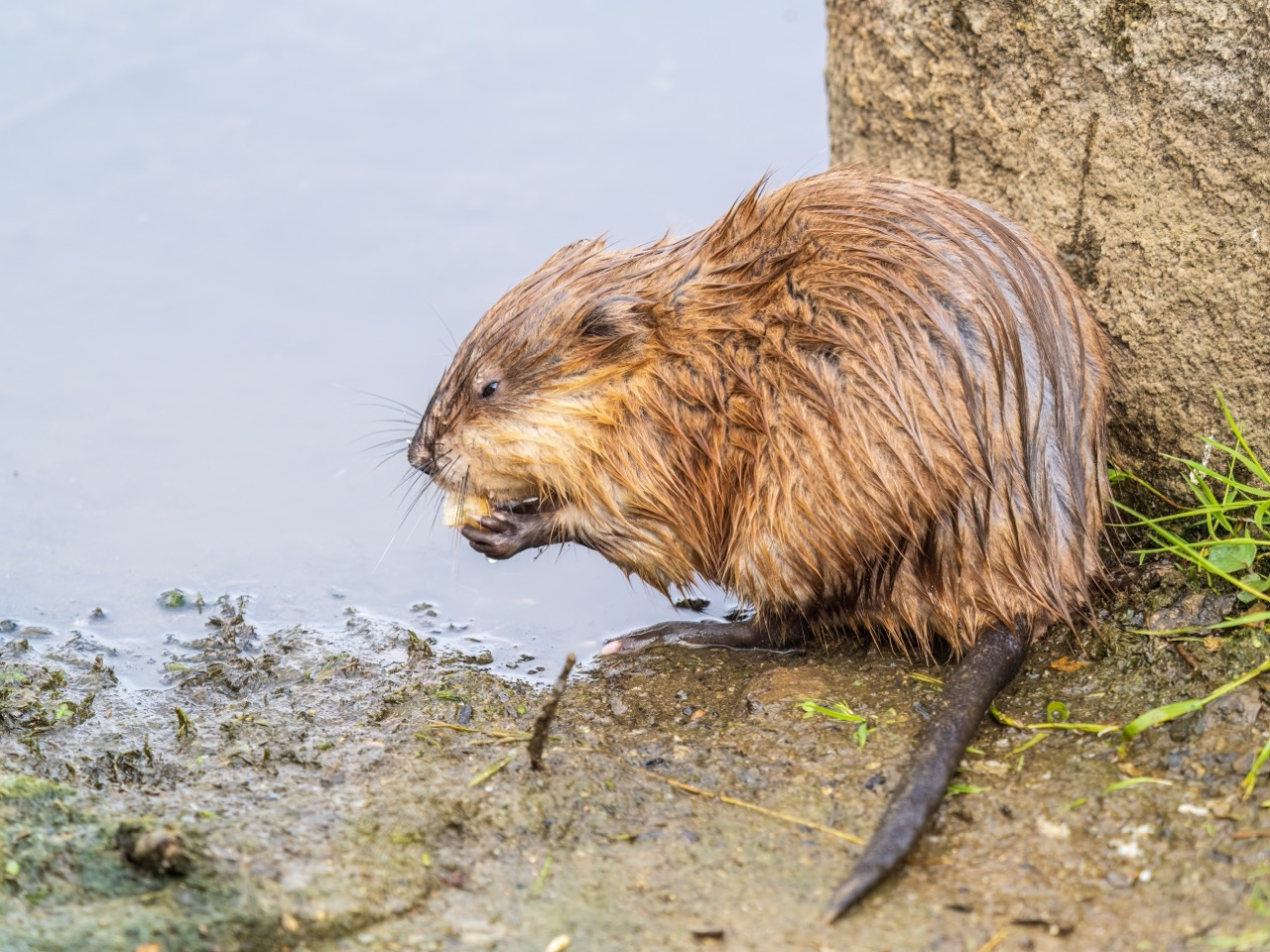:
Muskrats, small aquatic rodents native to North America, possess an unassuming charm and a remarkable ability to shape their environment. Known scientifically as Ondatra zibethicus, these creatures are not just important for wetland ecosystems but also fascinating from a biological and ecological perspective. Muskrats are often recognized for their robust swimming abilities and for the distinctive, dome-shaped lodges they construct, which dot the marshlands and riverbanks where they live. This article explores the intricate life of muskrats, shedding light on their characteristics, behavior, and the crucial role they play in their habitats.
Characteristics / Physical Description
Muskrats are medium-sized rodents, typically weighing between 600 to 2000 grams and measuring about 40 to 70 centimeters in length, including their tail. They have a compact body covered with thick, waterproof fur, which is usually dark brown and becomes denser and darker during winter. Their tails are long, flattened vertically, which aids in swimming. Muskrats also have partially webbed hind feet, small eyes, and valvular ears that close when submerged, adaptations that enhance their aquatic lifestyle.
Taxonomy and Classification
Muskrats belong to the family Cricetidae, which also includes voles, lemmings, and New World rats and mice. Within this family, muskrats are placed in the subfamily Arvicolinae and are the sole species in the genus Ondatra. Their closest relatives are other voles and lemmings, sharing common traits adapted for survival in harsh environments.
Behavior and Social Structure
Muskrats are primarily nocturnal and are most active at night. They are known for being solitary but can be found in higher densities during the breeding season or in particularly abundant habitats. These rodents are highly territorial around their lodges, which serve both as shelter and as a store for their food, primarily during the winter months.
Habitat and Distribution
Muskrats are found across a wide range of North America, extending from the Arctic tundra to the southern United States. They thrive in wetlands, including marshes, riverbanks, and lakes, where standing or slow-moving water is available. Their presence is crucial for the maintenance and creation of wetland habitats, as their activities promote open water spaces and prevent overgrowth of vegetation.
Diet and Feeding Habits
Omnivorous by nature, muskrats primarily feed on a variety of aquatic vegetation, such as cattails, water lilies, and rushes. They also occasionally eat small fish, frogs, and shellfish. During winter, when plant matter is scarce, they rely on stored food within their lodges.
Breeding and Reproduction
Muskrats breed prolifically; a single pair can produce several litters each year, with each litter consisting of up to eight young. Breeding season typically starts in spring and can continue into summer. The young are born blind and hairless but develop rapidly, becoming independent within a few weeks.
Relationship with Humans
Muskrats have a complex relationship with humans. They are often considered pests because their burrowing can weaken dikes and flood control structures. However, they are also valued for their fur and are a traditional source of food and clothing for Native American tribes. Environmental management practices often need to address the impact of muskrat populations on human infrastructure while considering ecological benefits.
Evolutionary History
Muskrats are believed to have evolved in North America during the Pleistocene epoch, adapting to the glaciated landscapes and expanding their range as the ice sheets retreated. Their evolutionary success is attributed to their flexible diet and efficient reproductive strategies, allowing them to colonize a wide range of aquatic environments.
Muskrats serve as a vital component of their ecosystems, contributing to the biodiversity and health of wetlands. Understanding and preserving these industrious animals is essential for the conservation of North America’s aquatic habitats, ensuring that they continue to thrive and maintain the ecological balance.

